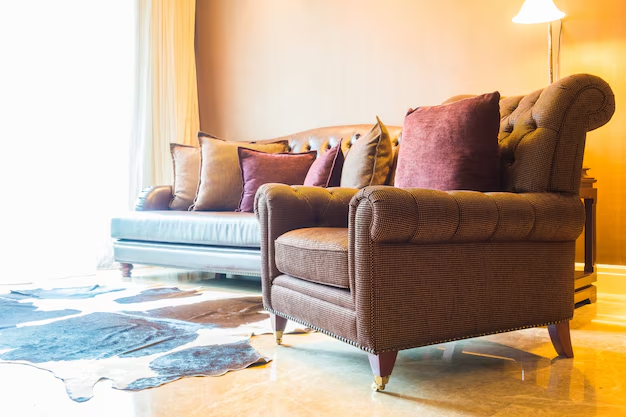Maintaining the appearance and longevity of upholstered furniture is essential for creating a cozy and welcoming home. Whether it’s your favorite couch, a beloved armchair, or a set of dining room seats, proper care can make a substantial difference. Over time, upholstered furniture can accumulate dust, dirt, and stains, which not only affect its look but also its durability.
Regular maintenance and cleaning can keep your furniture looking its best. Understanding the right techniques and practices for different types of upholstery can prevent damage and extend the life of these valuable pieces. Simple daily habits and periodic deep cleans will ensure that your furniture stays clean and comfortable for years to come.
In this article, we will explore practical tips for regular cleaning, protecting against spills and stains, dealing with common upholstery issues, and long-term care strategies. By following these guidelines, you can preserve the beauty and functionality of your upholstered furniture, making your home more inviting and comfortable for family and guests.
Regular Cleaning and Vacuuming Techniques for Upholstered Furniture
Keeping your upholstered furniture clean starts with regular vacuuming. Dust and dirt can accumulate quickly on fabric surfaces, leading to dullness and wear. Use a vacuum cleaner with an upholstery attachment to gently remove dust and debris. Focus on crevices and seams where dirt tends to settle. Aim to vacuum your furniture at least once a week to keep it looking fresh.
Another important technique is spot cleaning. When minor spills or stains occur, address them immediately to prevent them from setting. Blot the spill with a clean, absorbent cloth, avoiding rubbing, which can worsen the stain. Use a mild cleaning solution suitable for your upholstery type. Always test the solution on a hidden area first to ensure it doesn’t damage the fabric.
Additionally, rotating and fluffing cushions can help maintain the shape and comfort of your furniture. Swap the positions of cushions regularly to ensure even wear and tear. Fluffing the cushions helps them maintain their shape and prevents them from becoming flat and uncomfortable. By incorporating these simple practices into your cleaning routine, you can keep your upholstered furniture looking its best.
Protecting Your Furniture from Spills and Stains
Protecting your upholstered furniture from spills and stains is crucial for maintaining its appearance and extending its lifespan. One effective way to do this is by using fabric protectors. Fabric protectors create a barrier on the upholstery, making it more resistant to spills and stains. Apply a fabric protector spray according to the manufacturer’s instructions and reapply as needed, especially after deep cleaning.
Another practical tip is to establish a “no eating or drinking” policy on upholstered furniture. Limiting food and beverages to designated areas can significantly reduce the risk of stains. If this is not feasible, consider using slipcovers or throws to protect the fabric from potential spills and crumbs. Slipcovers are easier to clean and can be removed and washed regularly.
It’s also beneficial to keep a stash of clean, absorbent cloths or paper towels within reach. In the event of a spill, you can immediately blot the area to prevent the liquid from seeping into the fabric. Quick action is key to minimizing damage. Finally, educating family members and guests about the importance of careful handling will help ensure that everyone takes part in keeping your furniture clean and protected.
Tips for Dealing with Common Upholstery Issues
Handling common upholstery issues promptly can prevent minor problems from becoming major headaches. Here are some tips for addressing typical challenges:
- Pet Hair: To remove pet hair from furniture, use a lint roller or a vacuum with a pet hair attachment. You can also use damp rubber gloves to easily pick up pet hair.
- Odors: To neutralize odors, sprinkle a bit of baking soda on the fabric, let it sit for 15 minutes, and then vacuum it up. For stronger smells, consider using a fabric deodorizer designed for upholstery.
- Sun Damage: Prolonged exposure to sunlight can fade fabric colors. To prevent this, position furniture away from direct sunlight or use curtains and blinds to limit exposure.
- Sagging Cushions: Over time, cushions can lose their shape. Rotate and flip them regularly and consider adding extra stuffing to help them regain their form.
- Water Rings: If water rings form on your upholstery, lightly dampen the area again and dry it evenly with a hairdryer on a low setting. This can help blend the ring into the rest of the fabric.
By addressing these issues as they arise, you can maintain the appearance and comfort of your upholstered furniture.
Long-term Maintenance and Care Strategies
Long-term maintenance strategies help ensure your upholstered furniture remains in good condition for years. One essential strategy is professional cleaning. Even with regular at-home cleaning, professional upholstery cleaning can remove deeply embedded dirt and restore the fabric. Schedule a professional cleaning service at least once a year.
Another long-term care tip is to keep furniture in climate-controlled environments. Extreme temperatures and humidity can damage fabric and frames. Maintaining a stable, moderate indoor climate helps protect your furniture’s integrity.
Investing in high-quality furniture covers can also extend the life of your pieces. These covers protect upholstery from dust, dirt, and accidental spills. Choose covers that are machine washable for easy maintenance.
Finally, regularly inspect your furniture for any signs of wear or damage. Tighten loose screws, fix broken parts, and address any issues immediately to prevent further deterioration. Regular maintenance ensures that your furniture remains both functional and visually appealing over the long term.
Conclusion
Maintaining upholstered furniture doesn’t have to be a daunting task. With regular cleaning, protective measures, and timely attention to common issues, you can keep your furniture looking and feeling new for years. Proper care not only enhances the appearance of your home but also extends the life of your valuable pieces.
Incorporating the simple tips and techniques discussed in this article into your routine will help you preserve the beauty and comfort of your upholstered furniture. From daily maintenance to addressing specific problems and planning for long-term care, these strategies will make a noticeable difference.
For a thorough and professional cleaning that ensures the best care for your upholstered furniture, contact Monster Clean. Our expert team is dedicated to providing high-quality upholstery cleaning services to keep your furniture in top condition. Call us today at (757) 523-1175 to schedule an appointment!




